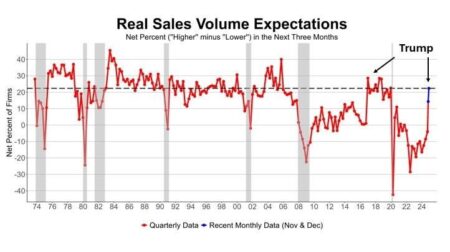Alex Shubat is the co-founder and CEO of Espresa and a serial entrepreneur in Silicon Valley tech.
In my experience, traditional health benefits are no longer sufficient to meet the needs of the modern workforce. As healthcare costs soar and the economic landscape shifts, businesses face a critical challenge to prioritize employee well-being while safeguarding financial sustainability.
By focusing on health equity and maximizing the return on investment of benefit dollars, companies can create a healthier, more productive workforce and gain a competitive edge.
In this article, I will discuss how companies can leverage strategic benefits to support a more equitable and sustainable wellness ecosystem for employees in the face of rising healthcare costs.
Strategies For A Healthier Workforce
According to the Commonwealth Fund’s 2024 Biennial Health Insurance Survey, nearly one in four U.S. adults are underinsured. Facing high out-of-pocket costs and deductibles, many are forced to skip needed care or take on medical debt even when they have healthcare coverage. Delaying care has dire health consequences, with 57% of working-age adults reporting worsening health problems after a cost-related delay in care.
Forward-thinking leaders understand that a future where optimal health is accessible for all is a strategic imperative. By embracing a people-centered approach to healthcare, prioritizing preventative care and fostering a culture of wellness, organizations can empower employees to take charge of their health journeys.
Why Health Equity?
Health is more than just the absence of illness. It’s a dynamic state of well-being influenced by a myriad of factors, including genetics, lifestyle, environment and social determinants.
Investing in employee well-being translates directly to reduced healthcare costs, increased productivity and a more engaged workforce. This, in turn, leads to lower absenteeism, higher retention rates and a stronger employer brand—ultimately driving profitability and positioning your company for long-term growth.
For every employee to have the resources and support they need to be healthy and productive, employers must break down barriers that prevent certain groups from thriving, including those groups based on race, ethnicity, socioeconomic status, gender, sexual orientation, disability and geography.
Strategic Benefits For Health Equity And Sustainable Well-Being
Care-focused employers can enhance traditional health plans with strategic benefits like tailored lifestyle perks, wellness programs or stipends for alternative healthcare options. Here’s a guide to these offerings:
1. Lifestyle Spending Bills
LSAs offer employees flexibility and choice in how they cover health-related expenses. This empowers them to prioritize their particular needs and preferences, leading to improved engagement and well-being. For employers, LSAs can help control costs by encouraging preventative care and promoting healthier lifestyle choices.
You want to make sure individuals can prioritize their unique needs, such as mental health support, childcare, healthy food access or fitness classes. For instance, an employee struggling with the financial burden of childcare costs can utilize LSA funds to cover these expenses. Any unused funds from the plan year can be reallocated or used to enhance the program in the future.
Ensure funds are equally accessible to all employees and provide flexibility based on individual needs. This approach helps prioritize health equity by addressing the diverse needs of your workforce. Recognize that social factors influence health outcomes, especially for historically marginalized communities.
Employees facing systemic barriers to healthcare can use LSAs to access culturally competent providers and specialized care, directly addressing the impact of social and economic disparities on their health. By structuring lifestyle benefits to promote health equity and integrating them within wellness programs, workplaces can empower employees to engage in wellness-related activities and adopt healthier, more active lifestyles.
2. Wellness Programs (On-Site Or Virtual)
Comprehensive wellness programs, encompassing nutrition education, fitness classes, mindfulness workshops and on-site health screenings, empower employees to prioritize their well-being. By promoting healthy habits and reducing health disparities, these programs create a more equitable and supportive workplace environment for all.
Employers can consider partnerships with virtual platforms like Headspace (meditation and sleep support), Talkspace (online therapy), Les Mills (on-demand fitness) and Wellbeats (movement and mindfulness) for accessible resources for employees, whether in-office, remote or hybrid. Wearable devices like Garmin and Fitbit offer health, movement, sleep and stress tracking for well-being challenges, including wheelchair mode for employees with mobility challenges.
Wellness programs can fill the gaps left by traditional healthcare plans, which often incentivize treating illnesses rather than preventative wellness. These programs create incentives that reward both proactive well-being efforts and effective disease management, significantly enhancing the value of traditional healthcare plans.
3. Rewards And Recognition
Empower employees to thrive with a robust wellness rewards program. You can incentivize healthy habits like movement, mindfulness practices and nutritious eating through points, rewards and recognition.
For example, your well-being and fitness programs can engage employees in team, company and global challenges and individualize the experience for each employee, regardless of location. Incentivized wellness wallets are a great way to allow employees to earn funds to complete personalized goals. This creates a motivating environment that encourages active participation and fosters a strong sense of community.
You can streamline participation and management by using platforms that simplify enrollment, track activities and handle reimbursements for you. This approach reduces administrative burdens, making wellness programs more efficient and seamless for all involved. This way, you are more likely to continue these programs and get the most out of them.
Building A Healthier Workforce
A truly healthy population requires a holistic approach that promotes well-being, ensures equitable access to quality healthcare and gives individuals the power to make informed health decisions. Organizations cannot afford to ignore this mission-critical aspect of employee well-being.
Prioritize employee health equity with effective resource allocation based on workforce needs. Unlike more limited benefit offerings, like flexible spending accounts, LSAs and wellness programs can offer greater personalization options and a broader range of use. By tapping into employee needs and interests, companies can leverage strategic benefits that maximize value for employees and the organization.
Forbes Business Council is the foremost growth and networking organization for business owners and leaders. Do I qualify?
Read the full article here











